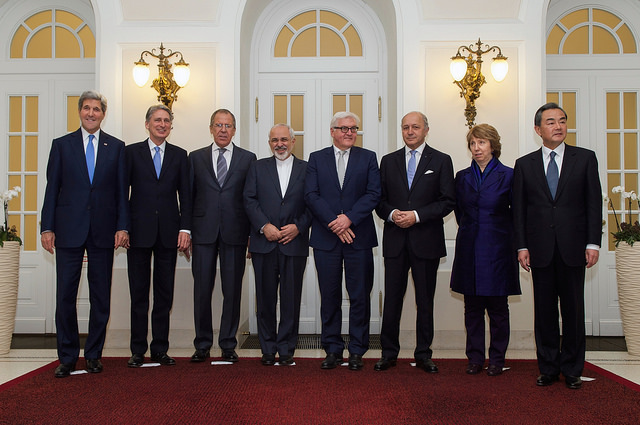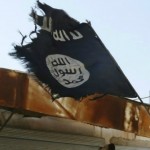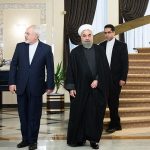by Robert E. Hunter
It’s too early to tell all there is to be told about the negotiations in Vienna between the so-called P5+1 and Iran on the latter’s nuclear program. The “telling” by each and every participant of what happened will surely take place in the next several days, and then better-informed assessments can be made. As of now, we know that the talks did not reach agreement by the November 24 deadline—a year after the interim Joint Plan of Action was agreed—and that the negotiators are aiming for a political agreement no later than next March and a comprehensive deal by June 30.
This is better than having the talks collapse. Better still would have been a provisional interim fill-in-the-blanks memorandum of headings of agreement that is so often put out in international diplomacy when negotiations hit a roadblock but neither side would have its interests served by declaring failure.
An example of failing either to set a new deadline or to issue a “fill in the blanks” agreement was vividly provided by President Bill Clinton’s declaration at the end of the abortive Camp David talks in December 2000. He simply declared the talks on an Israeli-Palestinian settlement as having broken down, rather than saying: progress has been made, here are areas of agreement, here is the timetable for the talks to continue, blah, blah. I was at dinner in Tel Aviv with a group of other American Middle East specialists and Israel’s elder statesman, Shimon Peres, when the news came through. We were all nonplussed that Clinton had not followed the tried and true method of pushing off hard issues until talks would be resumed, at some level, at a “date certain,” which had been the custom on this diplomacy since at least 1981. One result was such disappointment among Palestinians that the second intifada erupted, producing great suffering on all sides and a setback for whatever prospects for peace existed. Poor diplomacy had a tragic outcome.
This example calls for a comparison of today’s circumstances with past diplomatic negotiations of high importance and struggles over difficult issues. Each, it should be understood, is unique, but there are some common factors.
Optimism
The first is the good news that I have already presented: the talks in Vienna did not “break down” and no one walked away from the table in a huff. The other good news is that the official representatives of the two most important negotiators, the United States and Iran, clearly want to reach an agreement that will meet both of their legitimate security, economic, and other interests. Left to themselves, they would probably have had a deal signed, sealed, and delivered this past weekend if not before. But they have not been “left to themselves,” nor will they be, as I will discuss below.
Further good news is that all the issues involving Iran’s nuclear program have now been so masticated by all the parties that they are virtually pulp. If anything is still hidden, it is hard to imagine, other than in the minds of conspiracy theorists who, alas, exist in abundance on any issue involving the Middle East. A deal to be cut on specifics? Yes. New factors to consider? Highly unlikely.
Even more good news is that the United States and the other P5+1 countries (US, UK, Russia, China, France plus Germany), have got to know much better than before their official Iranian counterparts and overall Iranian interests, perspectives, and thinking (US officials, long chary of being seen in the same room with “an Iranian,” lag behind the others in this regard). We can hope that this learning process has also taken place on the Iranian side. This does not mean that the actual means whereby Iran takes decisions—nominally, at least, in the hands of the Supreme Leader, Ayatollah Khamenei—is any less opaque. But even so, there is surely greater understanding of one another—one of the key objectives of just about any diplomatic process.
A partial precedent can be found in US-Soviet arms control and other negotiations during the Cold War. The details of these negotiations were important, or so both sides believed, especially what had to be a primarily symbolic fixation with the numbers of missile launchers and “throw-weight.” This highly charged political preoccupation took place even though the utter destruction of both sides would be guaranteed in a nuclear war. Yet even with great disparities in these numbers, neither side would have been prepared to risk moving even closer to the brink of conflict. Both US and Soviet leaders came to realize that the most important benefit of the talks was the talking, and that they had to improve their political relationship or risk major if not catastrophic loss on both sides. The simple act of talking proved to be a major factor in the eventual end of the Cold War.
The parallel with the Iran talks is that the process itself—including the fact that it is now legitimate to talk with the “Devil” on the other side—has permitted, even if tacitly, greater understanding that the West and Iran have, in contrast to their differences, at least some complementary if not common interests. For the US and Iran, these include freedom of shipping through the Strait of Hormuz; counter-piracy; opposition to Islamic State (ISIS or IS); stability in Afghanistan; opposition to the drug trade, al-Qaeda, Taliban and terrorism; and at least a modus vivendi in regard to Iraq. This does not mean that the US and Iran will see eye-to-eye on all of these issues, but they do constitute a significant agenda, against which the fine details of getting a perfect nuclear agreement (from each side’s perspective) must be measured.
Pessimism
There is also bad news, however, including in the precedents, or partial precedents, of other negotiations. As already noted, negotiations over the fate of the West Bank and Gaza have been going on since May 1979 (I was the White House member of the first US negotiating team), and, while some progress has been made, the issues today look remarkably like they did 35 years ago.
Negotiations following the 1953 armistice in the Korean War have also been going on, with fits and starts, for 61 years. The negotiations over the Vietnam War (the US phase of it) dragged on for years and involved even what in retrospect seem to have been idiocies like arguments over the “shape of the table.” They came to a conclusion only when the US decided it was time to get out—i.e., the North Vietnamese successfully waited us out. Negotiations over Kashmir have also been going on, intermittently, since the 1947 partition of India. The OSCE-led talks on Nagorno-Karabakh (Armenia versus Azerbaijan) have gone on for about two decades, under the nominal chairmanship of France, Russia, and the United States. All this diplomatic activity relates to a small group of what are now called “frozen conflicts,” where negotiations go on ad infinitum but without a lot of further harm done.
But with the exception of the Vietnam talks, all the other dragged-out talking has taken place against the background of relatively stable situations. Talks on Korea go nowhere, but fighting only takes place in small bursts and is not significant. Even regarding the Palestinians, fighting takes place from time to time, including major fighting, but failure to get a permanent end of hostilities does not lead to a fundamental breakdown of “stability” in the Middle East, due to the tacit agreement of all outside powers.
Dangers of Delay
The talks on the Iranian nuclear program, due to restart in December, are different. While they are dragging along, things happen. Sanctions continue and could even be increased on Iran, especially with so many “out for blood” members of the incoming 114th US Congress. Whether this added pressure will get the US a better deal is debatable, but further suffering for the Iranian people, already far out of proportion to anything bad that Iran has done, will just get worse. Iran may also choose to press forward with uranium enrichment, making a later deal somewhat—who knows how much—more difficult to conclude and verify. Israel will have calculations of its own to make about what Iran is up to and whether it should seriously consider the use of force. And chances for US-Iranian cooperation against IS will diminish.
So time is not on the side of an agreement, and any prospects of Iranian-Western cooperation on other serious regional matters have been further put off—a high cost for all concerned.
Due to the contentious domestic politics on both sides, the risks are even greater. In Iran, there are already pressures from the clerical right and from some other nationalists to undercut both the Iranian president, Hassan Rouhani, and the lead negotiator, Foreign Minister Mohammad Javad Zarif, both of whom, in these people’s eyes, are now tainted. We can expect further pressures against a deal from this quarter.
The matter is at least as bad and probably worse on the Western side—more particularly, on the US side. The new Congress has already been mentioned. But one reason for consideration of that factor is that, on the P5+1 side of the table, there have not just been six countries but eight, two invisible but very much present, and they are second and third in importance at the table only behind the US itself: Israel and Saudi Arabia.
Both countries are determined to prevent any realistic agreement with Iran on its nuclear program, even if declared by President Barack Obama, in his judgment, to satisfy fully the security interests of both the United States and its allies and partners, including Israel and the Gulf Arabs. For them, in fact, the issue is not just about Iran’s nuclear program, but also about the very idea of Iran being readmitted into international society. For the Sunni Arabs, it is partly about the struggle with the region’s Shi’as, including in President Bashar Assad’s Syria but most particularly in Iran. And for all of these players, there is also a critical geopolitical competition, including vying for US friendship while opposing Iran’s reemergence as another regional player.
The United States does not share any of these interests regarding Sunni vs. Shi’a or geopolitical competitions among regional countries. Our interests are to foster stability in the region, promote security, including against any further proliferation of nuclear weapons (beginning with Iran), and to help counter the virus of Islamist fundamentalism. On the last-named, unfortunately, the US still does not get the cooperation it needs, especially from Saudi Arabia, whose citizens have played such an instrumental role in exporting the ideas, money, and arms that sustain IS.
Thus it is to be deeply regretted, certainly by all the governments formally represented in the P5+1, that efforts to conclude the talks have been put off. The enemies of agreement, on both sides, have gained time to continue their efforts to prevent an agreement—enemies both in Iran and especially in the United States, with the heavy pressures from the Arab oil lobby and the Israeli lobby in the US Congress.
What happens now in Iran can only be determined by the Iranians. What happens with the P5+1 will depend, more than anything else, on the willingness and political courage of President Obama to persevere and say “Damn the torpedoes, full speed ahead” to the Gulf Arab states, Israel, and their allies in the United States, and do what he is paid to do: promote the interests and security of the United States of America.






Damn the torpedo’s, full steam ahead. Shall we hold our breath? Not on your life says the “O”. What the idiots don’t seem to get-that’s the Washington types-is the fact they may serve the providers of the bribes they receive, but in the process. make the U.S. overall, look like its run by a bunch of buffoons, which of course, it is. At least at this point in time, another failure hasn’t been stamped in the log book of U.S. M.E. operations.